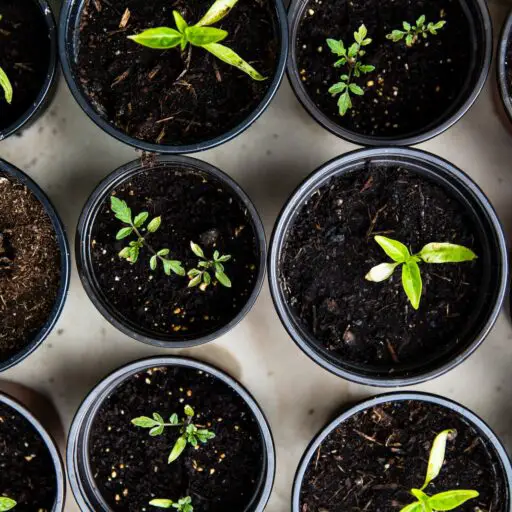Support our educational content for free when you purchase through links on our site. Learn more

Have you ever gazed at a flourishing garden and wondered, “How can I achieve this gardening glory?” Whether you’re a budding green-thumb or seasoned soil-warrior, becoming a successful gardener involves a blend of art, science, and a bit of elbow grease. Today, we dive into the roots of gardening success, sharing sage advice directly from our dirt-dusted experiences at Community Gardening™ and the vibrant voices of our community members.
Table of Contents
- Quick Answer
- Quick Tips and Facts
- The Seed of Gardening: A Brief Chronicle
- Understanding Your Plant Zone
- Soil Science: The Foundation of All Gardens
- Planning Your Plant Palette
- Implementing a Sustainable Watering Strategy
- Fertilizing Fundamentals: Feeding Your Plants Well
- The War on Weeds: Prevention and Control
- Pest Patrol: Keeping Critters at Bay
- Pruning Practices: Promoting Plant Health
- Seasonal Garden Care
- Growing Organic: A Natural Choice
- Community Gardening and Collaborative Farming
- Using Tech Tools for Garden Management
- FAQ
- Conclusion
- Recommended Links
- Reference Links
Quick Answer
In this extensive guide, we unveil the 15 cardinal strategies that can elevate your gardening game from novice plots to prolific produce! Master these, and you’ll be harvesting joy alongside your garden yields.
Quick Tips and Facts
- Climate Knowledge: Know your hardiness zone! It determines what grows best in your locality. Check your zone here.
- Soil Testing: Invest in a soil test kit from companies like Luster Leaf or MySoil—vital for understanding soil composition.
- Water Wisely: Use a watering system like Olla Pots for efficiency.
- Seed Quality: Opt for top-notch seeds from Territorial Seed Company or Johnny’s Selected Seeds for better germination rates.
The Seed of Gardening: A Brief Chronicle
The art of gardening stretches back to ancient civilizations, where it was not only a source of food but also an aesthetic enhancement to living environments. Today, gardening has blossomed in myriad forms—vegetable patches, decorative landscapes, and even high-tech urban rooftops.
Understanding Your Plant Zone
Before you plant a single seed, it’s crucial to understand your climate. The USDA Hardiness Zone Map is your best friend here, helping you to select plants suited to your environment’s temperatures and seasons.
Soil Science: The Foundation of All Gardens
Healthy plants start with healthy soil. Begin with a soil test to determine pH and nutrient levels, adding amendments like compost or bone meal based on the results. Brands like Espoma offer organic solutions that can be a game-changer for your garden substrate.
Planning Your Plant Palette
Selecting the right plants for your zone isn’t just smart—it’s necessary. Mix native species with well-adapted non-natives. Apps like GardenCompass can help you make informed choices.
Implementing a Sustainable Watering Strategy
Water is life, but too much or too little can spell disaster. Install a drip irrigation system—this offers water directly to the roots, where plants need it most, and cuts down on water waste.
Fertilizing Fundamentals: Feeding Your Plants Well
Balance is key in feeding plants. Use a combination of slow-release organic fertilizers, like those from Dr. Earth, to nourish plants without burning them.
The War on Weeds: Prevention and Control
Mulching isn’t just for looks—it conserves moisture and blocks weed growth. Pre-emergent herbicides or organic mulches like straw can keep those pesky plants at bay.
Pest Patrol: Keeping Critters at Bay
Integrated pest management (IPM) strategies can help protect your garden without resorting to harsh chemicals. Encourage beneficial insects by planting marigolds or using products like Neem oil for eco-friendly pest control.
Pruning Practices: Promoting Plant Health
Pruning isn’t about snipping willy-nilly—it’s about encouraging healthy growth. Proper techniques vary by plant species, so keep a good pruning guide or app handy.
Seasonal Garden Care
Each season brings specific tasks; spring fertilizing, summer watering, fall mulching, and winter protection. Staying on schedule keeps your garden vibrant year-round.
Growing Organic: A Natural Choice
Embracing organic gardening means keeping both your food and the environment toxin-free. Certifications like OMRI (Organic Materials Review Institute) can guide you to safe products.
Community Gardening and Collaborative Farming
Join a local community garden or start one with neighbors. It’s not just about growing food but also about fostering community ties and sharing gardening wisdom.
Using Tech Tools for Garden Management
Modern technology offers garden planning apps and software like GrowVeg or Garden Planner that assist in design and planting schedules, harmonizing tech with natural processes.
FAQ
How profitable is gardening?
Gardening can be quite profitable if approached with a plan. Specializing in rare herbs or seasonal vegetables can attract niche markets willing to pay premium prices.
Can you make a career out of gardening?
Absolutely! From landscape design to agricultural consultancy, gardening offers diverse career opportunities.
How can I make money as a gardener?
Consider starting a blog, selling produce at farmers’ markets, or offering garden setup services.
How do I start a garden with no experience?
Begin small, focus on hardy plants, and use resources like local gardening clubs or online courses for guidance.
Conclusion
Whether your garden dreams are just budding or flourishing, embracing these 15 essential tips will ensure that your green spaces grow with both beauty and bounty. Remember, every soil-tuned, well-watered, and love-lathered plant grows not just in size but in the shared joy of the community it fosters.
Recommended Links
Reference Links
For further reading and verification of the information presented in this article, please visit Territorial Seed Company, which provides insights on high-quality seeds and gardening practices. Engage with more gardening aficionados and expand your green knowledge at https://blog.territorialseed.com.


